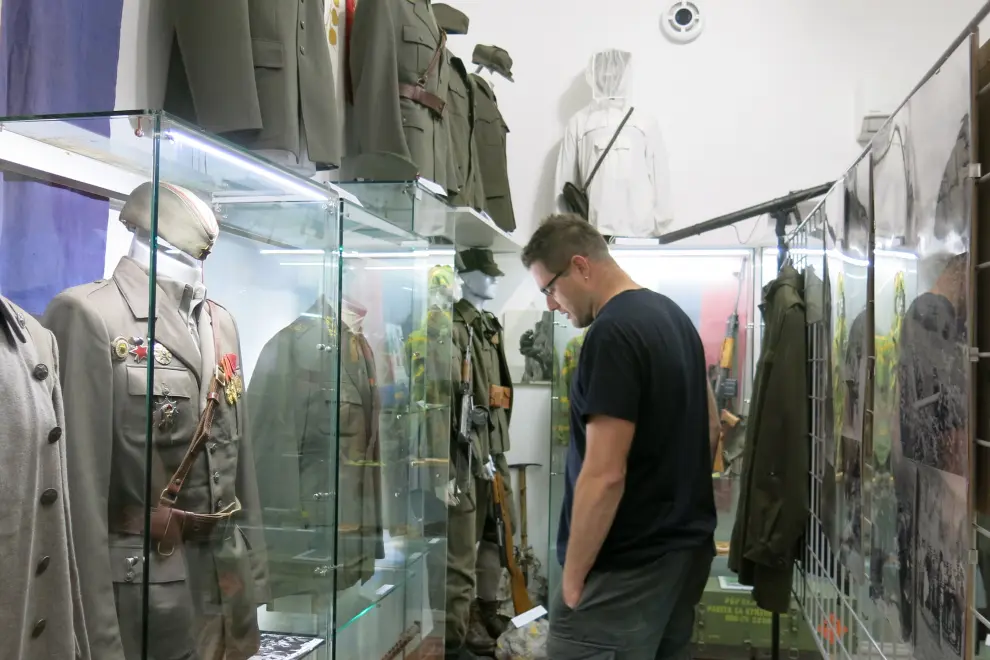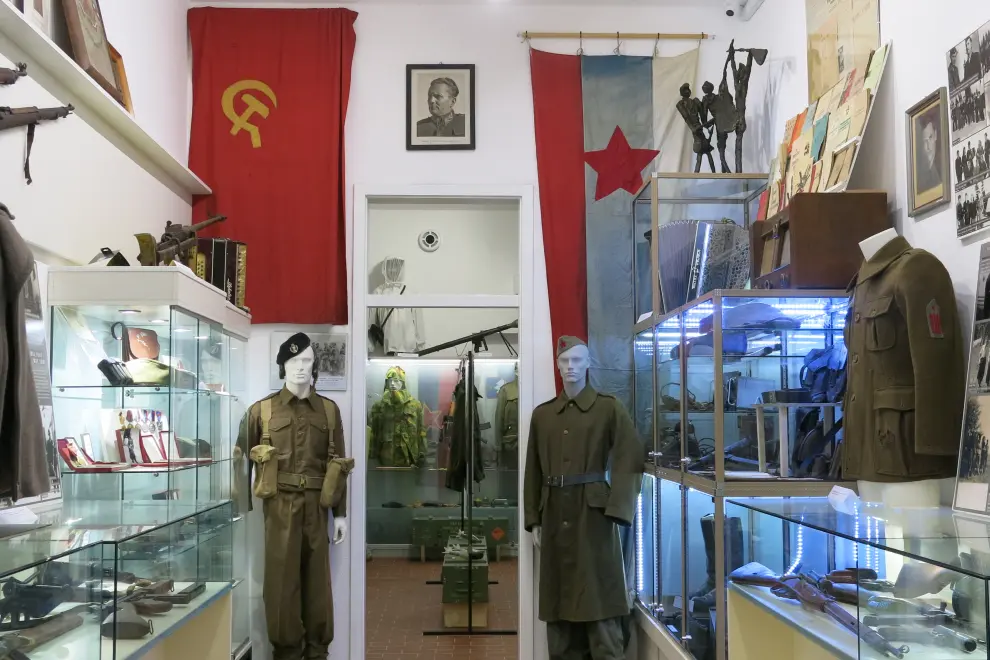Museum sheds light on Bohinj's turbulent past
Bohinj, an area nestling among the towering mountains of northwestern Slovenia that is best known for its lake, had its share of the turbulent past that shaped Europe in the 20th century. With the help of a rich collection of objects left behind by warring armies, a new museum sheds light on those events and the personal stories of the locals caught in them.
Starting with the story of a railway tunnel that played an important role in World War I, the new museum chronicles local history through both world wars, the Kingdom of Yugoslavia and Slovenia's independence.
Historia Bohinj has evolved from a private collection that local Žiga Arh started 20 years ago as a boy when he finished primary school.
"Back then we used to go to the mountains a lot, picking various objects, such as old bullets. I took them home and collected them with a friend," he told the Slovenian Press Agency about the beginnings of his museum collection.
 Žiga Arh amid uniforms displayed at his Historia Bohinj museum. Photo: Tinkara Zupan/STA
Žiga Arh amid uniforms displayed at his Historia Bohinj museum. Photo: Tinkara Zupan/STA
His interest initially caught by weapons, and later by uniforms and other artefacts, the collection kept growing and the artefacts became too numerous to count.
For many years, he kept his collection at home, but in July he opened the museum in a building opposite the Bohinjska Bistrica railway station.
Railway that supplied Isonzo Front
Its story begins in 1906, when the Bohinjska Bistrica-Podbrdo railway tunnel was built, a key supply route for the Isonzo Front, a series of battles between the Austro-Hungarian and Italian armies in World War I.
"We continue with the Rapallo border between Italy and the Kingdom of Yugoslavia, which ran right through these hills," says Arh.
"The next segment is World War II, when Bohinj was occupied by the Italians, but soon came under German rule. The collection also features the stories of internees and people forcibly mobilised into the German army, the German occupation and the Partisan resistance in Bohinj.
"Then there is the Yugoslav People's Army, the formation of Slovenia's Territorial Defence, the time leading to Slovenia's independence," says Arh.
 Historia Bohin museum. Photo: Tinkara Zupan/STA
Historia Bohin museum. Photo: Tinkara Zupan/STA
Personal stories
A special place is given to the locals who were involved in those events in one way or another, and many of the objects in the collection are linked to personal stories.
Arh is delighted with the response of the locals. He says they are eager to take part and help with exhibits, notes and stories, which means the museum continues to grow.
He is also happy with the good response from the first visitors. Many tourists came to the museum in the summer and groups are starting to arrive in the autumn.
Arh runs the museum together with Andraž Čoralić. They also provide two guided tours, one through Bohinjska Bistrica and the surrounding area, and the other along the Rapallo border.
Arh works closely with Janko Stušek, who in 1971 with late Tomaž Budkovič conceived the first public collection that later led to the establishment of the association Mini War Museum.
Since 2015 the latter collection is on display at the Tomaž Godec Museum in Bohinjska Bistrica, and Arh hopes the two museums will soon start a collaboration.


